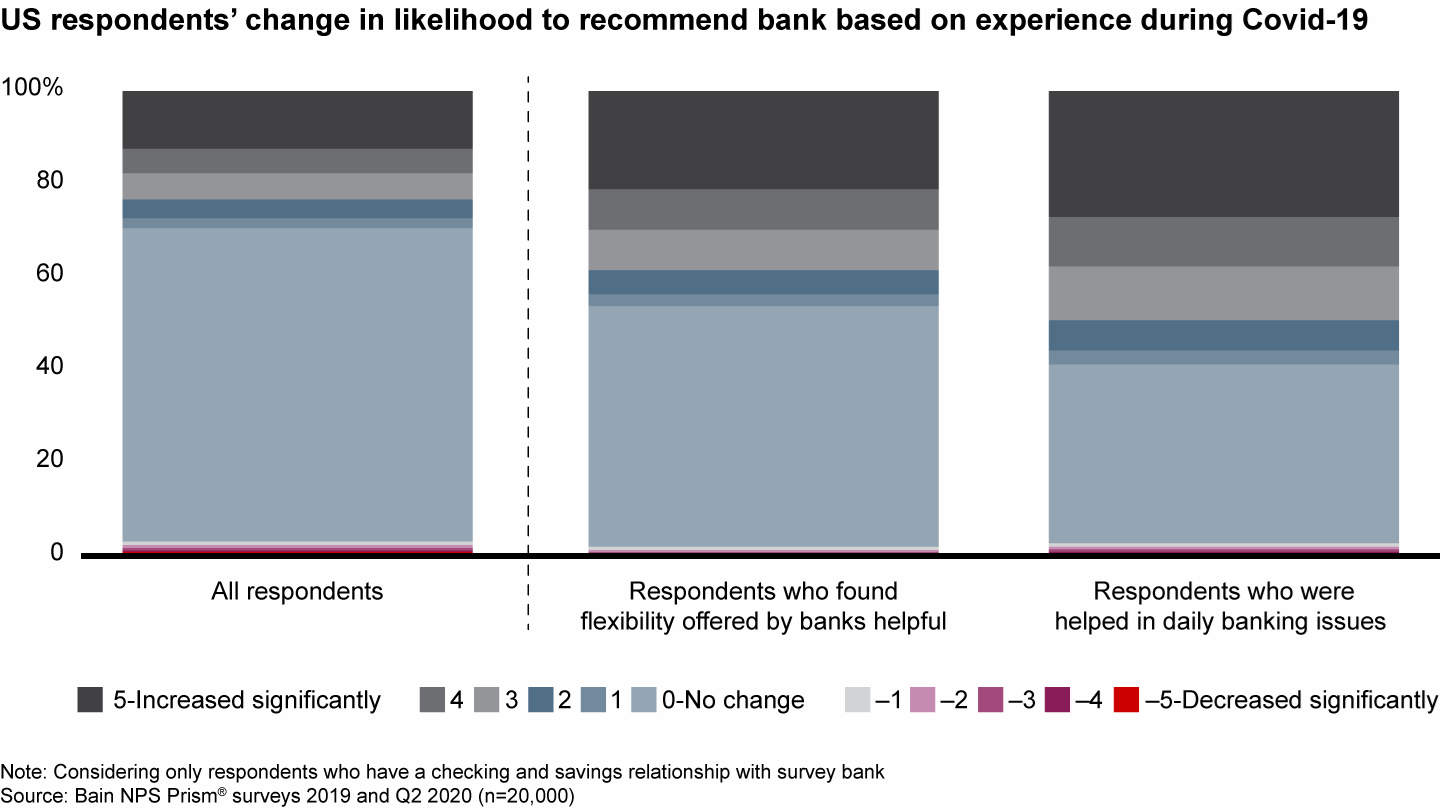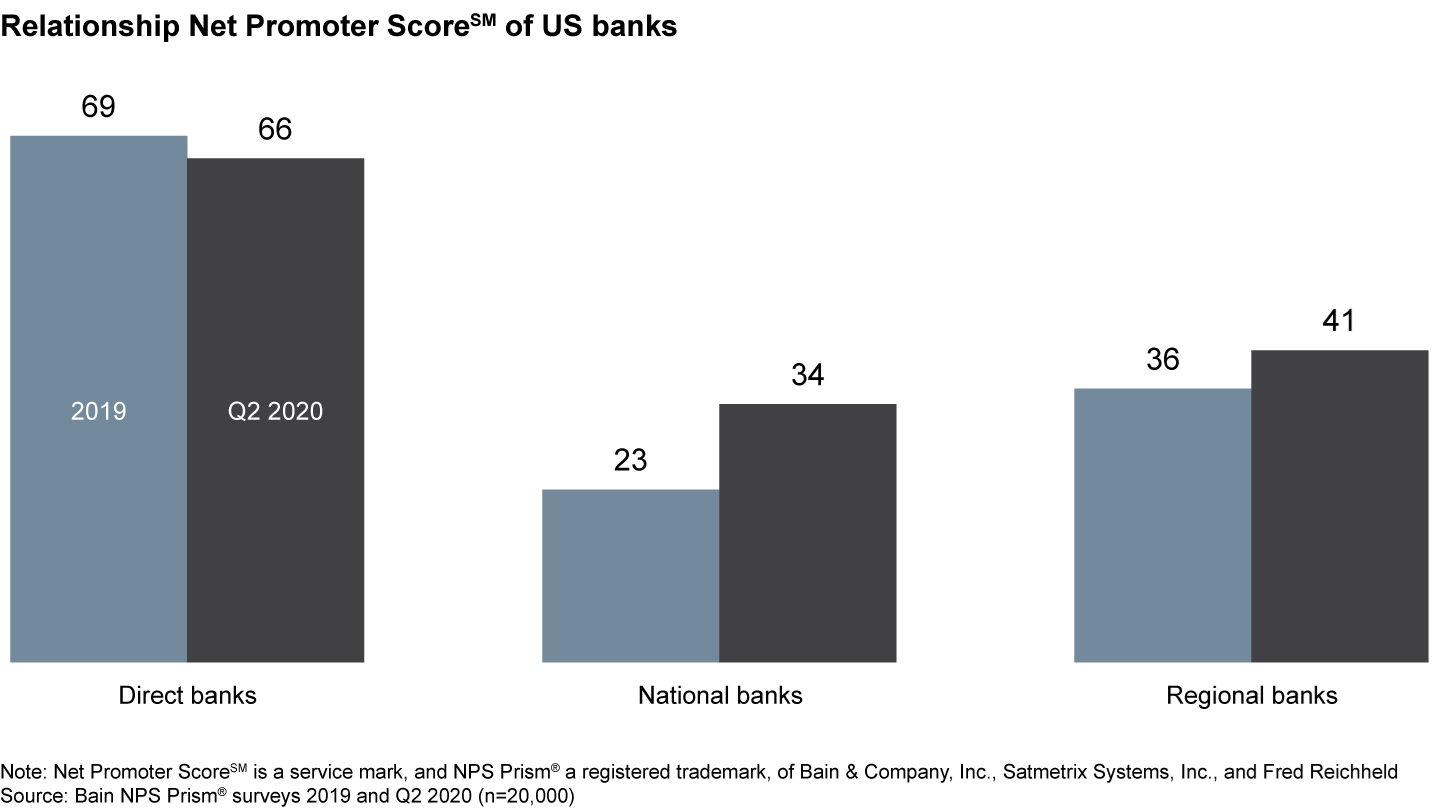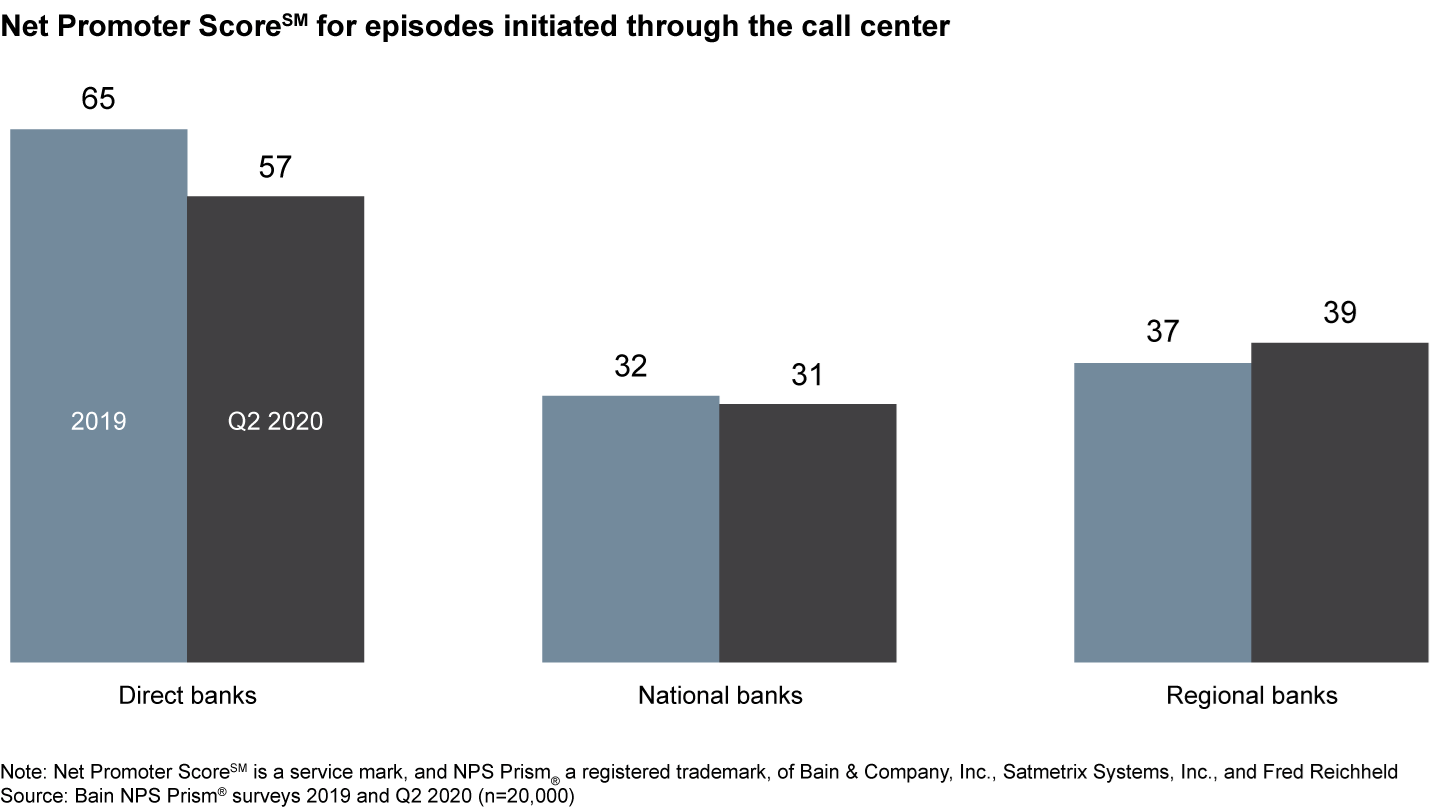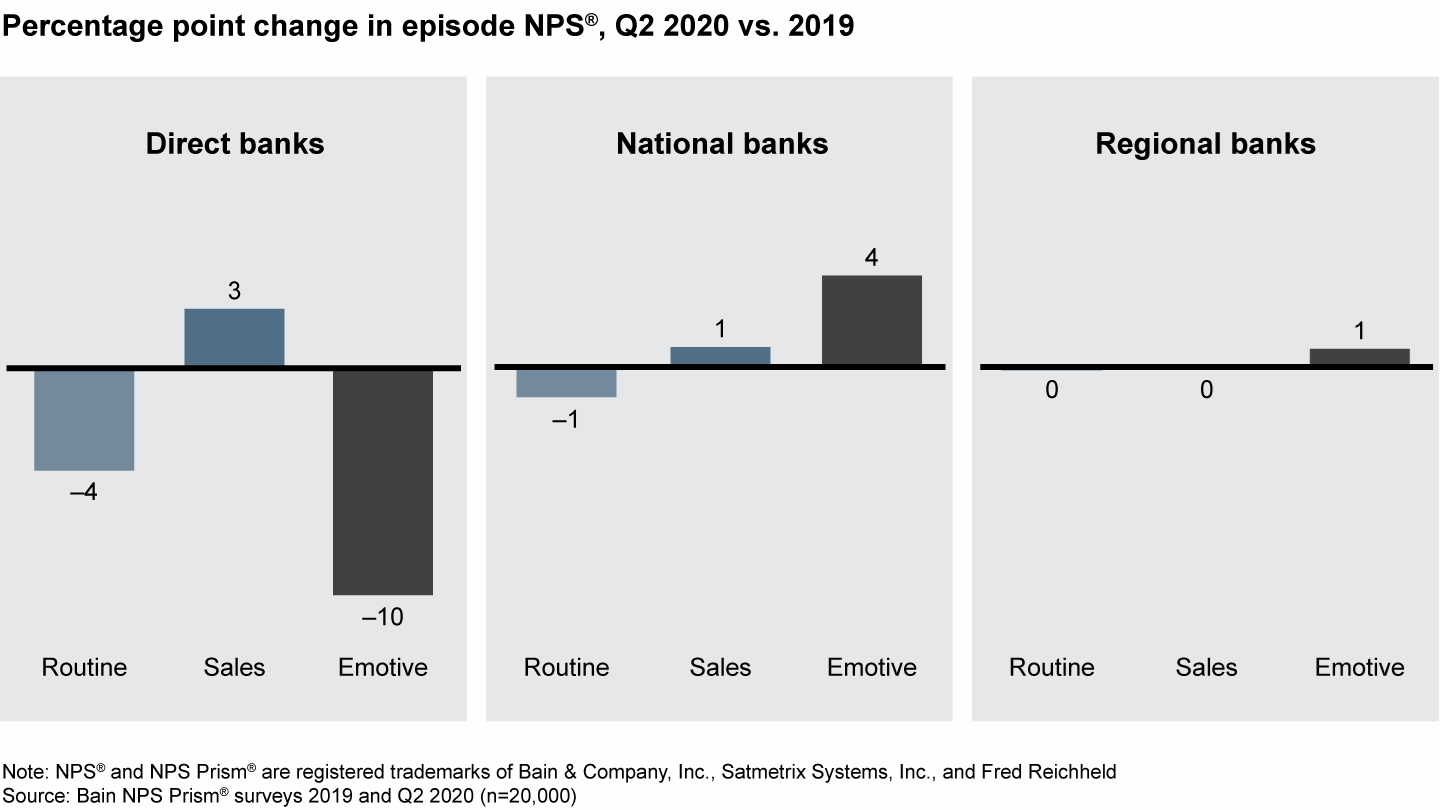Brief

Executive Summary
- Net Promoter Scores for US national and regional banks rose during the pandemic over 2019 scores. Scores for direct banks dipped, though these banks still outperform the traditional banks.
- What stands out among traditional banks are actions they took to help consumers, the empathy of contact center and branch agents, and policies to allow flexibility in repayment.
- To sustain customer advocacy when Covid-19 subsides, banks will have to improve performance without incurring huge costs.
- Leading banks have been migrating customers to digital self-service for simple interactions where convenience matters, freeing up employees to handle high-value customers or emotional situations.
Most US banks have fared well in their customers’ minds during the Covid-19 pandemic. Unlike the global financial crisis in 2008, many national and regional banks in particular have benefited from their flexible policies and helpful staff.
Now a key question is how they can extend this spate of goodwill without incurring huge costs.
In Bain & Company’s NPS Prism® survey of 20,000 US consumers during June this year, about 30% of respondents said they were more likely to recommend their bank based on their experience during the pandemic, with only 3% less likely to recommend (see Figure 1). The share of advocates was even higher for people who said their bank helped them with flexible policies or resolving daily banking issues.
Helpful actions and flexibility demonstrated by banks during the pandemic improved US consumers’ perceptions


The more favorable perceptions were reflected in banks’ overall relationship Net Promoter Score℠ (a key metric of loyalty). Scores rose over 2019 for national and regional banks, yet declined slightly for direct banks, albeit from a higher base level (see Figure 2).
US national banks had the greatest increase in loyalty scores during the pandemic, while scores for direct banks dipped


Helpful and flexible in the crisis
What stands out among customers of national and regional banks are proactive actions that banks took to help, the empathy of contact center and branch agents, and policies to allow flexibility in repayment.
“I lost my job due to Covid, and Wells was more understanding about my situation than other credit card companies,” one young woman said of Wells Fargo. Another respondent noted how the drive-through setup at his JPMorgan Chase branch “was quick and easy and very safe.”
Direct banks lost some of their advantage in this regard, particularly in their call centers, where the average Net Promoter Score for this episode dropped by 8 points compared with the prior year (see Figure 3). To develop their simple and easy digital propositions, they rely on more rigid, lower-cost business models. That approach can cause problems during a crisis—though their score for this episode remains higher than that of the traditional banks.
Direct banks in the US had a decline in call center performance, while national and regional banks held steady


“They are rude and hard to deal with,” said one woman of the call center at her direct bank. “I think they are using Covid as an excuse to give bad customer service.”
Direct bank performance generally declined for emotive customer episodes such as disputing charges or seeking advice. Net Promoter Scores fell for these types of interactions, whereas they rose for national and regional banks (see Figure 4).
US direct banks saw the biggest drop in NPS for customer episodes with a strong emotional component


To be clear, direct banks maintain a significant lead in loyalty over traditional banks, so it will take more than the pandemic to erode that advantage. To continue to close the gap, traditional banks would like to sustain and extend the improvements in customers’ perceptions. The trick is how to do this in light of the high cost of in-person or phone service, as well as the headwinds on cost and profitability brought on by the pandemic and subsequent lockdowns.
Steps to sustain the gains
As consumers continue to shift to digital channels for many interactions, banks will have to reserve human channels for moments of truth or emotional situations that demand a deft human touch.
To sustain customer advocacy when the pandemic subsides and more normal activities resume, banks should consider several steps:
- Invest in a deeper understanding of episode performance, using such metrics as failure rates, percentage of transactions handled right the first time, cycle times and episode Net Promoter Scores.
- Redesign critical episodes to improve performance. Bank of America redesigned its loan deferment process to be completed with just two clicks, following receipt of 150,000 deferment applications over two weeks. The redesign process relieved pressure on the call center.
- Focus in-person resources on high-value customers, or on episodes where a human touch, augmented by analytics, has the most value. When some UK post offices and HSBC branches had to change their operating hours during the coronavirus outbreak, HSBC used analytics to develop a live dashboard that let employees know instantly which facilities were available, so that they could direct customers accordingly. At KeyBank in the US, a guided conversation system sifts through myriad data points in real time, providing staff with data about customers for more targeted product and service recommendations.
- Migrate customers to digital self-service for simple interactions where convenience matters most, freeing up employees to handle moments of truth. This requires making the hard choices necessary to reduce avoidable transaction volume, through such steps as improving the interactive voice response system, or charging a fee for human interactions that are better done digitally.
The course and duration of the pandemic, the economic downturn and an eventual recovery remain uncertain. What’s clear is that a mix of flawless digital self-service, helpful intervention from skilled agents and appropriately flexible policies will win the day for banks in the medium term.
Net Promoter®, NPS®, and the NPS-related emoticons are registered trademarks of Bain & Company, Inc., Satmetrix Systems, Inc., and Fred Reichheld. Net Promoter Score℠ and Net Promoter System℠ are service marks of Bain & Company, Inc., Satmetrix Systems, Inc., and Fred Reichheld.